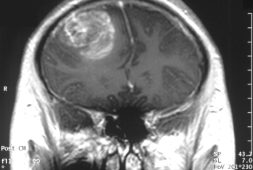
There are over-the-counter meds that you can access even without a doctor’s prescription. Then, there are those that have been prescribed but also come with specific instructions. While we’ve all been cavalier about taking specific medications, we all assume that there’s no grave danger attached to it.
There also those who forget to take a occasionally. That’s okay, for some folks. For others, this can be extremely dangerous. Drug non-adherence happens more often than you’d like, is dangerous, and can be extremely costly, not just financially, but to your wellbeing as well.
In this article, we look into the many reasons and the possible solutions we could do. It’s also important to note that before we go any further, it’s still best to go to the doctor for best advice.
According to some estimates in studies that have been conducted, around 40–50 percent of people do not take medications to manage chronic conditions despite the urging of medical experts.
Now, the figures above are quite staggering because this concerns health. But why do so many people do it? Medical News Today explores the many reasons behind drug nonadherence. It also delves deeper into the negative effects on the people and the healthcare system as a whole.
Adherence vs. Nonadherence
With good adherence, this means that you’re taking the prescribed medications according to instructions specified by the specialist. You are taking at least 80 percent of what’s recommended and prescribed.
The World Health Organization (WHO) has defined good adherence as “ the extent to which a person’s behavior — taking medication, following a diet, and/or executing lifestyle changes — corresponds with agreed recommendations from a healthcare provider.”
It’s also important to note that nonadherence may or may not be unintentional. For others, he or she may have taken upon themselves to design their dosage.
When we talk about unintentional nonadherence, this means that the patient accidentally forgot to take the dose, accidentally took the wrong dose, or took it at a wrong time. Also, it may involve improper storage because some of these prescribed meds come with strict instructions. An instance would be the need for the meds to be refrigerated or stored away from heat or light.
In terms of intentional nonadherence, this happens from a range of personal, medical, social, and economic factors.
The Reasons Behind It
A person takes his or her medications as prescribed because of a range of factors such as:
- Cognitive reasons: Included in this are conditions such as dementia and Alzheimer’s disease. This makes a person to take the medication against what’s actually prescribed. This is why expert guidance is needed here.
- Competence: This involves not trusting the doctor or the medical professional to make the right kind of decision. Possibility for this involves the fact that the expert is unaware or may be dismissive of cultural factors, personal preferences, or individual beliefs.
- Worries regarding side effects or dependency: The patient may feel overwhelmed by the number of side effects that comes with the prescribed meds.
- Denial: The patient has difficulty accepting the fact that he or she suffers from a health issue that needs the prescribed set of medicines.
- Depression: Those who suffer from depression are less likely to take medications as prescribed. This has been detailed in the American Medical Association report.
- Drug or alcohol dependency: The person is dependent on drugs and alcohol, which may counteract with the medication’s efficacy.
- Lack of symptoms: If symptoms are not present or can be dismissed as minor, or if these are resolved in the middle of treatment, he or she may stop the treatment or alter the dosage without advice. This happens commonly among those who find the treatment expensive, hard to take, or extremely strong that it causes adverse side effects.
- Lack of motivation: This means that there are changes or gaps in the middle of the treatment.
- Negative experiences: The person may have taken similar medications in the past and have not been impressed by the outcome.
- Physical impairment: Those who suffer from vision or hearing loss or from difficulty swallowing, for instance, may find it very challenging to take the prescribed meds.
Medicine Price and Other Systemic Factors
For many cases, the high price of medications is a prime reason for nonadherence. In reality, several meds that are out in the market are extremely expensive. This even applies to those who are fortunate enough to have health insurance. This is why many try to ration their supply or to never refill what has been prescribed to them.
Some are also unable to access proper treatment because it is not part of their benefit or their insurance. Then, there are those who need drugs that are unavailable in their area.
Other factors to nonadherence are:
- Lack of communication with their doctor
- Unsatisfying doctor-patient relationship
- Medical care is inconsistent
- Limited to no access to medical care and facilities
- Low expectations when it comes to care
- Lack of trust because of past experience
- Personal beliefs and experiences
- Practicing traditional or alternative medicines
- Cultural, ethnic, or religious beliefs
- Values they grew up with
- A feeling of being overwhelmed by the amount of medications
- Fear being stigmatized
- Concerns about what influences a doctor’s prescribing choices and patterns, such as pharmaceutical advertising or financial incentives
- Difficulty
- Inconvenience
- Resistance to dietary or lifestyle changes to be made
Effects on both Health and Healthcare
What are the full effects of medication nonadherence? Knowing the specifics may be challenging, even impossible at times. This is not typically listed as a cause of death. Moreover, doctors cannot always monitor how their patients are complying with instructions.
Studies have been made about nonadherence and according to some estimates, this causes approximately 125,000 preventable deaths in the United States each year, and $100 billion to $290 billion in avoidable costs. It may also cause up to roughly 10 percent of hospitalizations on an annual basis.
Moreover, not taking the prescribed medications for many chronic conditions such as bipolar disease and depression can also cause relapses and it could heighten symptoms. An older review from 2012 found that 20 to 30 percent of prescriptions are never filled and around 50 percent of medications for chronic conditions are not taken as prescribed.
A 2016 study, on the other hand, found that 35 percent of those who had been recipients of kidney transplants did not take the prescribed antirejection medications. Another study from 2015 found that most people who suffer from asthma take fewer than half of their prescribed doses. As proven in the past few years, medication adherence is important to improve outcome and to promote maximum health. In a 2018 study, medication adherence helped the patients avoid heart failure and reduce the risk of hospitalization and even death.
A 2019 study showed a connection with good adherence to a 21 percent reduction in long-term mortality. Nonadherence, on the other hand, increased the risk of hospitalization by 17 percent, especially in adults 50 years and older.
Health authorities are extremely aware of the impact brought about by nonadherence. In 2003, the experts from WHO observed that “Increasing the effectiveness of adherence interventions may have a far greater impact on the health of the population than any improvement in specific medical treatments.”
How to Improve Trust and Outreach
Improving adherence could be a challenge. That’s because you may require the person to go against their cultural or ethnic practices. It can also involve restoring trust in the medical community after years of forms of discrimination such as racism. Adherence may also require small changes. Those who have difficulty sticking to their schedule may need a form of reminder or it might involve big changes to the habits they won’t find easy to break.
Several factors such as education, support systems, medical monitoring, motivation, and evaluations of effectiveness could increase adherence. In one study, researchers discovered that the rate of hypertension control in a northern California healthcare system exceeded 80 percent because of a dynamic approach to promoting and upgrading adherence.
The researchers made the following conclusions based on the northern Californian’s system:
- An electronic health record that identified people at risk of nonadherence
- Outreach to make sure that everyone with hypertension got their blood pressure monitored regularly
- Staff outreach to people at risk of nonadherence
- Clinical pharmacists provided advice about adjustments to those who needed it most
- Disease-specific education classes
- Case managers for those with chronic conditions
- Classes and counseling that help enhance physician-patient collaboration and communication to improve and promote joint decision making
- Well implemented guidelines and algorithms for managing disease control by also promoting generic medications for better cost management
By looking into increasing adherence rates, experts need to educate the public about the wide-scale, costly, and even deadly risks if they do otherwise.
Role of the Doctor-Patient Relationship
It helps if doctors use basic motivational strategies to promote patient adherence. They need to realize the importance of taking a compassionate approach, promoting education, and empowering are just as vital.
There is a direct connection between a person’s view of their need and their sense of empowerment when it comes to adherence. Research also shows that an equitable doctor-patient relationship plays a big factor. Bottom line is that doctors and health insurance companies must face the problem if real change should happen. While it may seem like too much, there is light at the end of the tunnel. The good news is that, in most cases, the negative consequences of nonadherence can be avoided altogether.
Fixing the problem doesn’t have to be difficult for every case. Sometimes, it’s simply a matter of agreeing to follow a treatment plan because the pros far outweigh the cons. While there are different reasons involved, everyone needs to realize that there is no one-size-fits-all approach. The best moves vary from one case to the next. Public health experts do emphasize that we need to hone in on the doctor-patient relationship. This is the most crucial as one research paper shows. The 2015 document notes that “This unique relationship encompasses four key elements: mutual knowledge, trust, loyalty, and regard.”
Its authors go on to explain, “Knowledge refers to the doctor’s knowledge of the patient, as well as the patient’s knowledge of the doctor. Trust involves the patient’s faith in the doctor’s competence and caring, as well as the doctor’s trust in the patient and his or her beliefs and report of symptoms. Loyalty refers to the patient’s willingness to forgive a doctor for any inconvenience or mistake and the doctor’s commitment not to abandon a patient. Regard implies that the patients feel as though the doctor likes them as individuals and is ’on their side’.”



